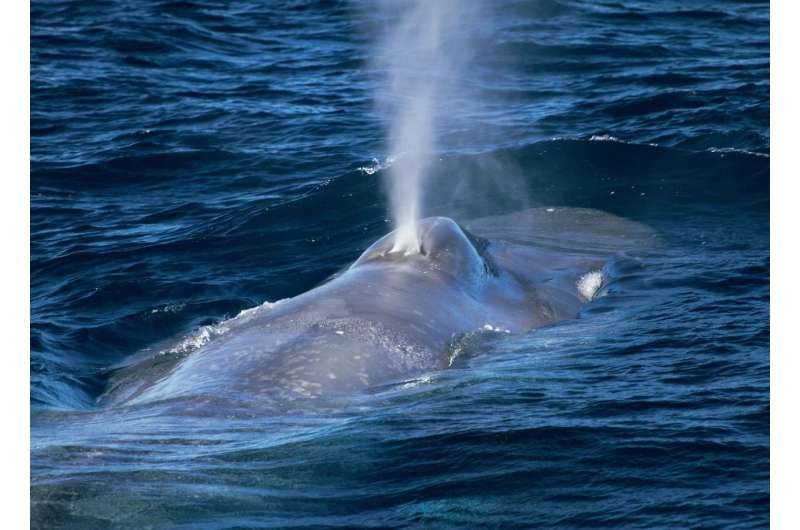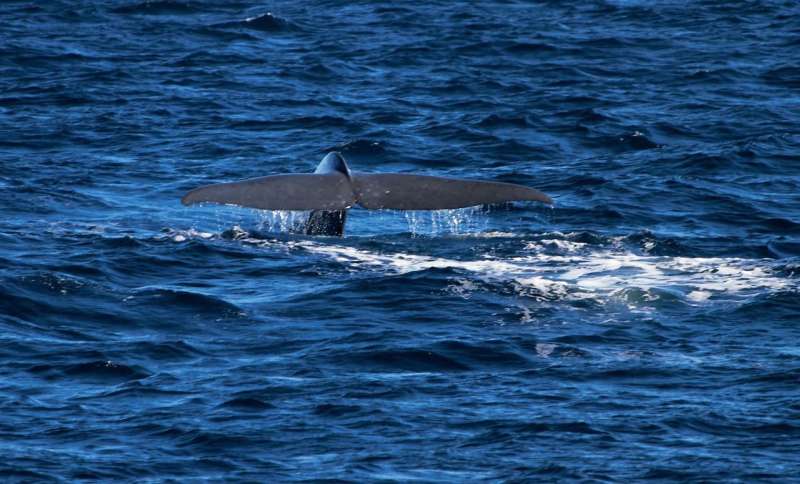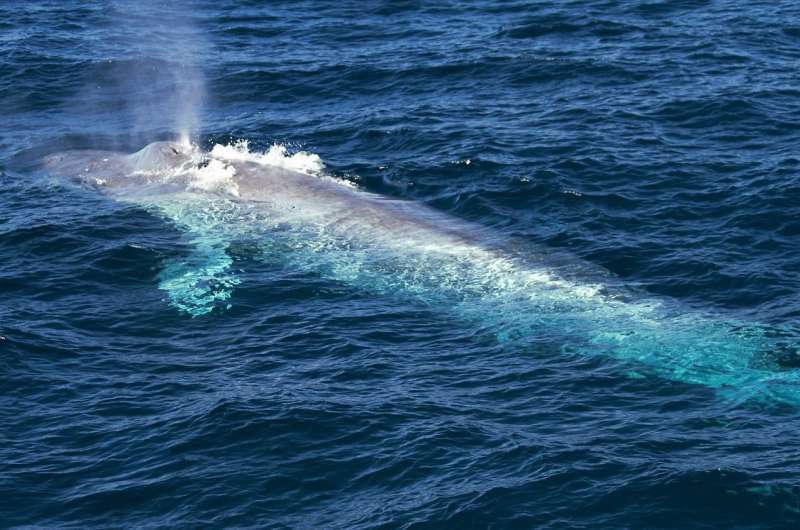Clues from an endangered blue whale population

Clues in the DNA of endangered blue whales – the largest living animal – has shown that Australia is home to one population that likely travels widely and is adapted to a range of environmental conditions.
Blue whales are at this moment in Australian waters taking advantage of the abundance of krill that occurs during the summer.
They feed typically in waters off Cape Jaffa (east of Adelaide) to Cape Otway (west of Melbourne) and also in waters west of Rottnest Island in Western Australia.
However, these giants will not stay long: they will soon be migrating north to spend the winter in warmer waters around Indonesia, and will return again next summer.
"The question remains whether the blue whales using Australian waters are one, interbreeding population, or are multiple populations that may have different adaptations to different environmental conditions," says Dr. Catherine Attard, a member of a team of scientists from Flinders University who set out to answer this question with their collaborators the Centre for Whale Research in Western Australia and the Blue Whale Study in Victoria.
"Confirming their number of populations is key to appropriate management of this endangered species. It will allow pinpointing which populations may be threatened by human activities occurring in particular geographic regions," says Dr. Attard

Just as family members are genetically similar to each other, individuals from the same population are also genetically similar to each other, and so DNA can be used to identify populations. DNA can also help tell us whether blue whales from different localties are adapted to different environmental conditions.
"We found using DNA collected from wild animals that the blue whales in Australia – whether they are feeding in waters off South Australia and Victoria, or off Western Australia – are all one population and likely adapted to a range of environments.
"This means the same population is exposed to human activities occurring across a wide range of locations. For example, the blue whales feeding in Western Australia may be impacted by human activities occurring as far away as Victoria as they are all part of the same population," says Dr. Attard, a lecturer in molecular ecology at Flinders University.

Blue whales are still recovering from 20th century whaling and are listed in Australian legislation as endangered. The Australian Government has a conservation management plan for the species that aims to minimise human-induced threats to allow the recovery of blue whales.
"Good conservation practices use scientific information from, for example, genetic, acoustic, and visual surveys to improve the protection of endangered species. We have provided one more piece of the puzzle that will continue a strong scientific basis for the conservation of blue whales," says Dr. Attard.
More information: Catherine R. M. Attard et al. From conservation genetics to conservation genomics: a genome-wide assessment of blue whales ( Balaenoptera musculus ) in Australian feeding aggregations, Royal Society Open Science (2018). DOI: 10.1098/rsos.170925
Journal information: Royal Society Open Science
Provided by Flinders University




















